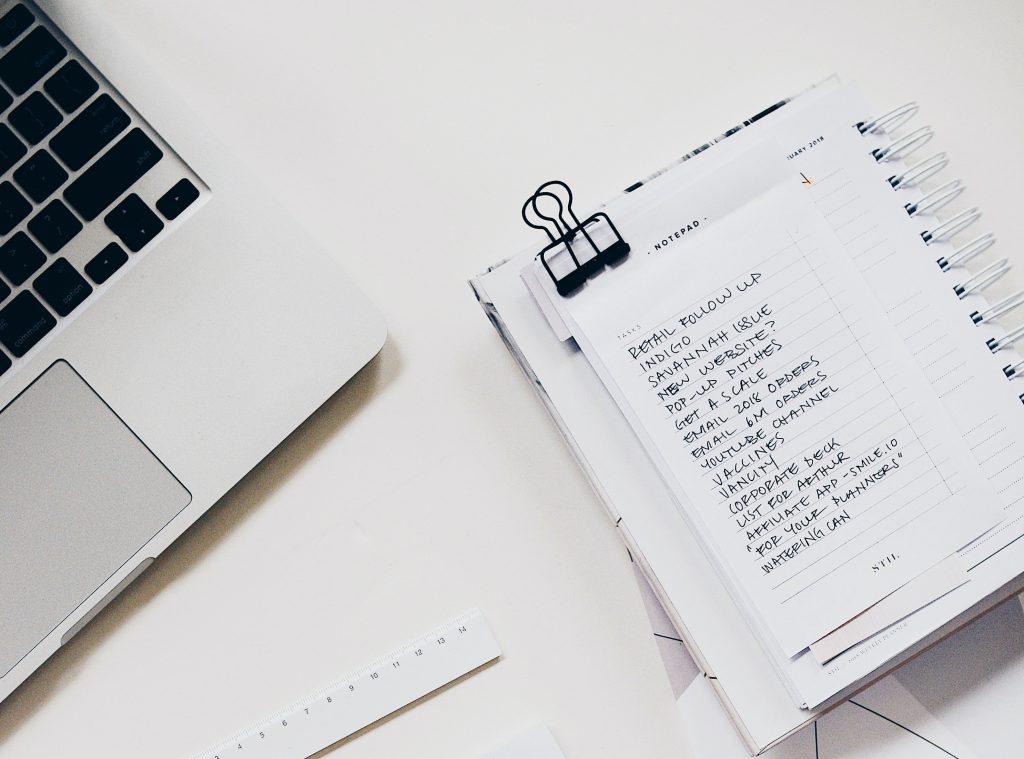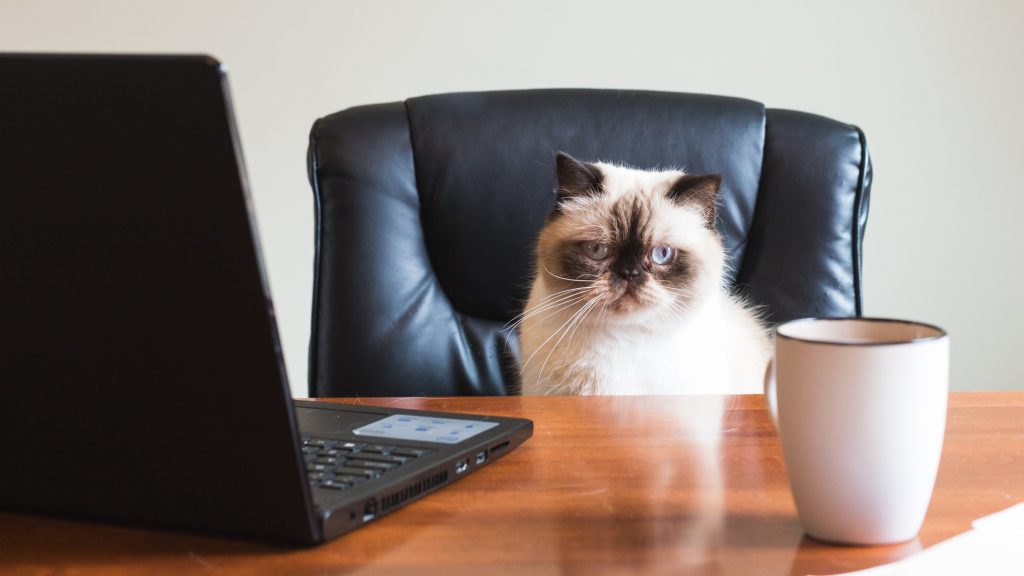By now, several months have passed since the beginning of the Corona crisis and there is still no end in sight. More and more companies now see home office as a real alternative to the office. And even the freelancers tend to stay at home instead of going to coworking spaces. Working within your own four walls brings a lot of advantages, but can also have some drawbacks without the right preparation. Whether you’re employed or freelance – in this blog post you’ll get 12 tips to make your home office more productive.
The Advantages
- No “office distraction”. It can be easier to concentrate at home than in the office. If you’re usually distracted by a conversation from your colleagues every few minutes, you’re all for yourself at home. On top of that, meetings that last for hours are replaced by e-mails or short phone calls, saving you valuable time.
- Creative freedom. Of course, in the office you can place a photo or two of your loved ones and decorate your desk with a small plant. However, you have full creative freedom within your own four walls. Maybe you have an extra room for your office, which you can furnish according to your ideas. In addition, your table will not be covered by stuff from your colleagues. You alone are responsible for order and disorder.
- No commuting. If you work from home, you save yourself the (perhaps long and time-consuming) way to the office. You don’t have to get up early to get stuck in traffic jams, find a parking space and burn unnecessary CO2. If you normally travel by bus or train, you save yourself waiting time. Instead, you will find time for yourself during an extensive breakfast, a walk or while reading. You also save money that you would otherwise spend on gas and parking or train tickets.
- More flexibility. If you are a freelancer, you can start and stop working whenever you want. You are not tied to the opening hours of coworking spaces and cafés. Maybe you already know at which times of the day you are more concentrated and at which times you are exhausted. Follow your biorhythm and use your time more effectively! Employees also benefit from the flexibility of home office. You need to coordinate less with your colleagues and can decide yourself when to take a break. Instead of a long lunch break, you can take shorter breaks and see how they affect your energy.
- No dress code. If you don’t have important video calls in your job, you can even work from home in your pyjamas. There are absolutely no limits to what you can wear in your home office. Why you should still go for a stylish instead of a sloppy look is explained further below.

The Drawbacks
- Many disruptive factors. Instead of chatting colleagues and long meetings, distractions such as your own family or household are lurking at home. Seeing piles of dishes and laundry piled up all day can easily distract you from your actual tasks. Of course, consumer electronics can also get in your way. A loud radio or a running TV and especially your smartphone increase the risk of being distracted.
- Work-Life Balance? Walking out of the office after work and being able to calm down until the next working day is not so easy in your home office. Even with your computer turned off, your thoughts may continue to move around problems at your job. You will find a solution for this problem further below.
- Less social contact. The great downside of lockdown, quarantine and home office: because of the reduced social contact, you may feel lonely. You may be more stressed because you lack social balance. Furthermore, social contacts often motivate us to become active and stay on the ball. In the home office you have to pull yourself together and discipline yourself.
- Higher costs. Most likely, your incidental costs increase on the days you work from home. When you are in your home, you also use electricity, water and gas. Also, the cost of coffee, tea and your meals will increase when you are at home. If you do not work from your sofa or already have an office, you will also have to pay for the equipment of your workplace. A proper desk, chair, laptop, computer equipment and lighting must be bought and installed. This can be quite expensive, but is also tax deductible.
- Less information. To keep track of everything about office life, a quick chat at the coffee machine usually suffices. If you sit at home, the typical office grapevine falls away. In order to stay up to date, you should regularly tune in to your colleagues and keep yourself informed about news.

Tips For Your Home Office
Working in a home office can have some advantages, but also risks. Find out what you can do to avoid these risks now:
- The right equipment. To run your online marketing or dropshipping business from home, you need a computer that works well. All programs necessary for your job must be installed and kept up to date. Instead of staring at the tiny screen of your laptop all day long, I recommend that you buy one or more external monitors. These can easily be adjusted to your eye level and thus prevent neck pain. A sufficiently large, ergonomically shaped mouse is also an absolute must if you don’t want to suffer from carpal tunnel syndrome after just a few days in home office. In addition, an ergonomic office chair or seating ball and a standing desk can be very useful. However, the most important thing for most jobs is a constantly available and fast Internet connection. If necessary, install additional repeaters in your house or book an upgrade at your provider.
- The right workplace. Once you have purchased everything you need, you’ re already halfway there. The next step is to set up your workstation correctly. Set up your desk so that you can look into the room or out of the window rather than at a wall. Feel free to place pictures of friends and family at your desk to make you feel good. In a good mood you”ll work better. In general, you should also order your work materials so that you can find them right away! Only if you have a predetermined order for your objects, you will save yourself the time of searching. If you need creativity in your job, try to set up an “inspiration corner” where you collect gadgets and games. These can inspire you and take your mind off things when needed. To round off your workplace, you should place plants next to your desk or in the room. They provide oxygen, look nice and can also inspire you.
- The right clothes. There are people who can be super productive and creative in pyjamas. I am definitely none of them. To get my mind ready for work, I take the time to put on office or everyday clothes in my home office. You don’t have to sit in a suit or blazer in front of the PC, but sometimes the right clothes can help you work.
- The right scheduling. Even without having to leave the house it is important to get up early enough. This gives you time to wake up, shower, get dressed and have breakfast. By the way, I start every day by making my bed. That way I have already done one thing and had the first success. At work you should listen to what your body tells you. Are you tired after 20-30 minutes of concentrated work? Or can you keep going for hours without being distracted? If you belong to the first group like me, you should use the Pomodoro technique. Set a timer for 20-25 minutes (e.g. on pomofocus.io), during which you work concentrated on a task. Then you mark where you have stopped and take a short 5 minute break. During this break you can get a glass of water, stretch or relax your eyes. Then you should have power for the next phase. After 3-5 Pomodoro phases, take a longer 15 minute break.
- The right breaks. As mentioned in the last point, small breaks are very important so that you have enough energy for concentrated work. In each break you should focus on exercise, food and distraction. Consciously focus your attention on something else that doesn’t strain your brain too much (so don’t turn on your smartphone or TV). You can get yourself a drink or a snack, walk a few steps around the apartment or look out the window. Also, air out your workplace regularly to ensure that you have enough oxygen. During your lunch break you can use the time after a meal to take a walk. Even 10 minutes of walking will make you feel refreshed afterwards. Try it yourself!
- The right to dos. Every morning I get an overview of the tasks of the day with a to-do list. This way I know exactly what to expect and can prepare myself for it. It is also important to prioritize the tasks and, at best, to estimate the effort involved. It is up to you to decide where to write down your to-do list. There are numerous apps like Evernote, Wunderlist, Todist or Trello, but Outlook also has a “tasks” function. Personally, I am a big fan of a notebook for my tasks. The best thing about it: I can really cross out or tick off my tasks after they are done.
- The right reward. Once you have completed a task, reward yourself with a little snack or your favorite tea, for example. Whatever makes you happy ensures that you can look forward to it during a task. That way, you stay motivated and productive in your home office.
- The right way to deal with disruptive factors. I have already mentioned above disruptive factors such as TV, music or your smartphone. While it is easy to simply turn off the TV or radio, it is often especially difficult with our beloved mobile phone. Often, the only thing that helps here is tough discipline to avoid being distracted. For example, put it in the next room or in the drawer when turned off. Alternatively, you can use apps like Forest or Space to keep your fingers off your smartphone while you work.

How to Finish Your Day in Home Office
After working a whole day from home, you can be proud of yourself! To be prepared for the next day, here are a few last tips:
- Check your to do list. Scross out all the tasks you have done from your list and pat yourself on the back. Transfer tasks you couldn’t complete to the next day’s list.
- Tidy up. Use the last 5-10 minutes before closing time to prepare your workplace for the next day. Create order by putting all materials back to their determined place. That way, it is easier for you to start your evening fully relaxed.
- Call it a day. To finish your working day, create a habit for yourself that you do regularly. That can be making yourself a cup of tea, eating your favourite cookie or going for a walk. The main thing is that you do it on a regular basis to signal your brain that it’s time to relax.
- Create a balance. A day in home office can be exhausting and lonely at times. In order to find a balance, follow a hobby. Turn on your favorite music or do sports. Call your friends or family and talk to them. Especially in times of a crisis, the exchange with our fellow human beings is invaluable and ensures that we can at least feel a little “normal”.
Now it’s your turn!
Well, have you been able to pick up one or two things for your own home office? Try it out yourself and make your daily work routine around your online business more productive.
Leave me a comment below on which tip you found most helpful.
Good luck in your Home Office and stay healthy!
1 Foto: Anthony Tran
2 Foto: Alexander Safonov
3 Foto: STIL




